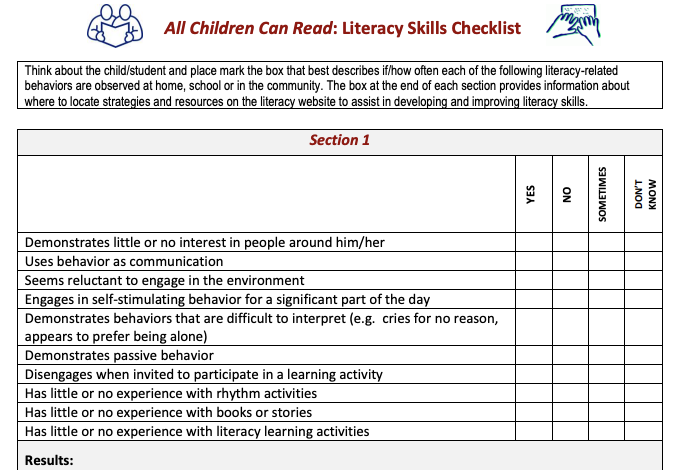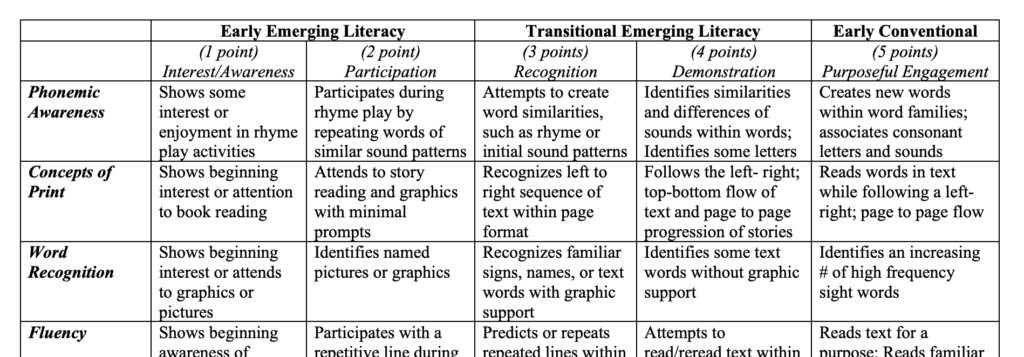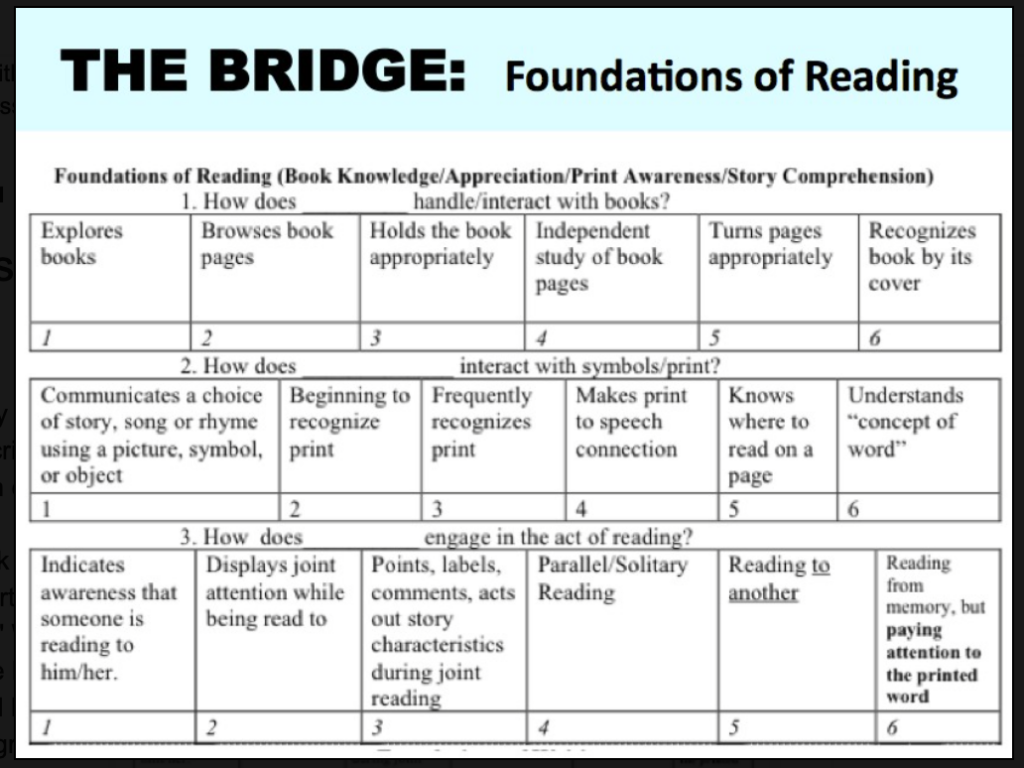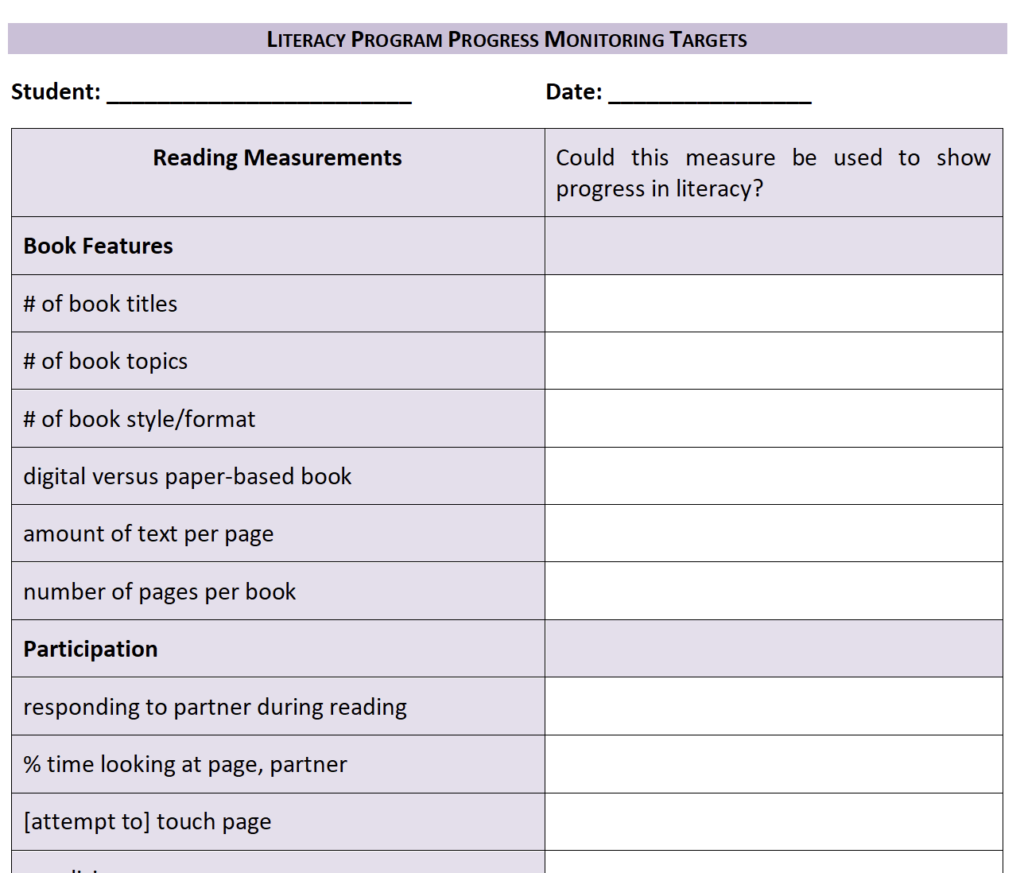Literacy Assessment Tools

Literacy Motivation Profile
by Gretchen Hanser and Rachel Skinner
Two pages of questions/choices about student’s attitudes, beliefs, experiences, and opinions related to literacy.

All Children Can Read Literacy Skills Checklist
by National Center on DeafBlindness
The checklist describes if/how often specific literacy-related behaviors are observed at home, school or in the community. At the end of each section there is information about where to locate strategies and resources to assist in developing and improving literacy skills.

Literacy Rubric
by Kathy Staugler 2007
One page rubric of literacy behaviors ranging across early emergent, transitional emergent, and early conventional skills. Areas described include:
- phonemic awareness
- concepts of print
- word recognition
- fluency
- comprehension
To use the rubric, start by engaging the student in story reading and/or reading related activities. Observe student’s behaviors and level of participation. Mark the space in each row that most clearly defines the student’s level of concept understanding. At the end, calculate the total points. You will use this information to determine the level of text to select to help the student move further in their skill and understanding.

Emergent Literacy Behaviours Checklist
by Literacy for All
The checklist provides a guide to describe a student’s current behaviors related to literacy. It specifically focuses on emergent literacy skills, going beyond the most basic features to more detailed observations. It can be used periodically throughout the year to monitor progress, inform instruction and document growth. The 10 page document includes one page of items for each of the sections below:
A. Interactions with Books
B. Engagement in the Act of Reading
C. Interactions During Literacy Activities
D. Engagement in Storytelling
E. Interactions with Symbols/Print
F. Drawing/Writing and Representing
G. Alphabet Knowledge
H. Phonological Awareness

The Bridge Assessment
by Center for Literacy and Disability Studies University of North Carolina at Chapel Hill
The Bridge is an early literacy and language assessment framework based on observation and portfolio development/analysis. Several documents including an experimental version of the Bridge Assessment Tool can be downloaded on the linked webpage. 9 page pdf


The Abecedarian Reading Assessment
by Sebastian Wren and Jennifer Wells
The Abecedarian was designed to provide diagnostic information about early reading skills. The 52 page document includes the administration and scoring of items in the sections below:
- Letter Knowledge
- Phonological Awareness
- Phoneme Awareness
- Alphabetic Principle
- Vocabulary
- Decoding
Literacy Goals

ASF Educational Webinar Series: IEP Goals for Early Literacy Development for Students
by Angelman Syndrome Foundation
Description
Literacy Progress Monitoring
